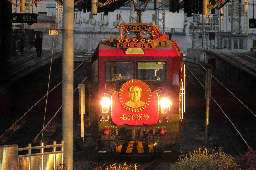My understanding is this is money going to disadvantaged communities to help them plan and advocate for new infrastructure projects. It is going out to 64 communities, some of which had submitted applications for projects before and didn't get federal funding
The program provides two years of no-cost intensive technical assistance to under-resourced and disadvantaged communities to help identify, develop, and deliver transportation projects that strengthen communities. In the first year of this program a large proportion of the communities selected had submitted previous applications for federal funding that were unsuccessful in large part because they did not have the same resources to complete their applications. The Thriving Communities Program will grow the pipeline of communities that can successfully compete for federal funding.
Thriving Communities funding will help selected communities get technical assistance for a variety of tasks – from preparing application materials and predevelopment activities, to deploying innovative community engagement, workforce development, and clean technology strategies. Interested communities submitted Letters of Interest for support and were selected through a competitive process.
The Thriving Communities Program prioritized the selection of disadvantaged communities – especially small, rural, and Tribal communities – that are working to advance projects to improve health outcomes, reduce housing and transportation cost burdens and improve housing conditions, preserve or expand jobs, and increase reliable mobility options for disadvantaged communities and households to better access health care, food, education, and other essential destinations
Selected communities will be grouped into four "Communities of Practice" identified by USDOT based on their unique technical assistance needs. The Communities of Practice are:
- Main Streets – Focused on Tribal, rural and small-town communities and the interconnected transportation, community, and economic development issues they face.
- Complete Neighborhoods – Focused on urban and suburban communities located within Metropolitan Planning Organization planning areas working to better advance complete streets policies and coordinate transportation with land use, housing, and economic development.
- Complete Transit-Oriented Neighborhoods – Focused on urban and suburban communities located within metropolitan regions working to advance equitable transit-oriented development and improve safe, reliable and accessible transit service.
- Networked Communities – Focused on those communities located near ports, airports, freight, and rail facilities to address mobility, access, housing, environmental justice, and economic issues.
Three of the communities chosen in this first round of funding are in California.
- A coalition in Anaheim comprised of the Anaheim Transportation Network, Community Action Partnership of Orange County, and Family Oasis Family Resource Center will focus on six disadvantaged census tracts that face transportation, equity, health, economic, and housing challenges. The partners will work towards providing safe, affordable, efficient access to zero-emission transit in the project area, including public engagement in planning the Katella Avenue bus rapid transit line.
- In Trinidad, the North Coast Tribal Transportation Commission and Humboldt County Association of Governments Technical Advisory Committee will work with the Trinidad Rancheria on a project to reunite the tribal community that was split by the construction of US 101 in the 1960s. The project includes developing safe transportation and access across the highway.
- In Watsonville, the Santa Cruz Regional Transportation Commission, Community Bridges, and the city of Watsonville will prepare an equity analysis of the existing transportation network in Watsonville. The local partners will develop a set of road safety and context sensitive design solutions, including road diets on state highways, a trail network, and the deployment of electric vehicle charging facilities in low-income neighborhoods.
Seems like it'll help transit projects and healing the damage done by highway construction so thats good.


